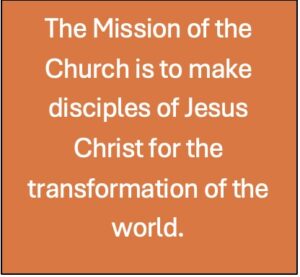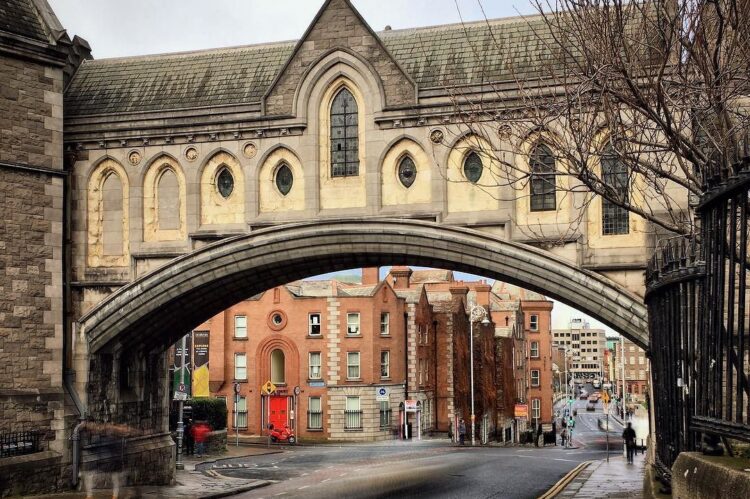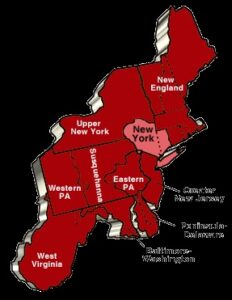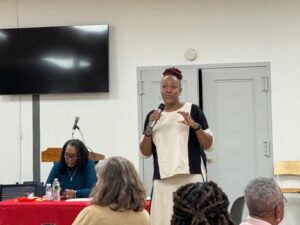The Role of the District Superintendent as Chief Missional Strategist
Rev. Elizabeth C. Abel
The role of a District Superintendent (DS) in the United Methodist Church (UMC) has its roots in the work of John and Charles Wesley. In his understanding that the world was his parish, John Wesley understood the need for connectionalism with other clergy and laypersons to make a global impact. The DS serves as a connector between various entities: the bishop, the bishop’s cabinet, and local pastors; the local church and the district where they are appointed; the district to the conference; and at times the conference to the denomination at large. The DS is a spiritual leader, supervisor, advocate, visionary, and a missional strategist.
The primary focus of the District Superintendent (DS) is to be a missional strategist per The United Methodist Book of Discipline, but not often is it highlighted as the primary work. What does being a Missional Strategist in the United Methodist Church mean?
DEFINITION: A missional strategist is a person who is skilled in planning action or policy for the mission, in this case, for the church.[1]
 The role of the superintendency is meant to consider the entire conference and how decisions regarding ministry and mission can further the Church’s mission.[2] As an extension of the episcopal office, it is the responsibility of the DS to go out and see what is needed in the community and local churches and share with the bishop to inform overall strategy development. The strategy developed by the bishop with the help of the cabinet is then implemented in the conference through the work of the district superintendent and district committees for the local church’s service, support, and resources. The DS as a Missional strategist provides this critical connection between the conference/district and the local church.
The role of the superintendency is meant to consider the entire conference and how decisions regarding ministry and mission can further the Church’s mission.[2] As an extension of the episcopal office, it is the responsibility of the DS to go out and see what is needed in the community and local churches and share with the bishop to inform overall strategy development. The strategy developed by the bishop with the help of the cabinet is then implemented in the conference through the work of the district superintendent and district committees for the local church’s service, support, and resources. The DS as a Missional strategist provides this critical connection between the conference/district and the local church.
As the chief missional strategist, the DS is to create ways within the district to meet the goals of the strategy set forth by the bishop through overseeing the ministry of clergy and congregations in the communities where the local churches are located. Remembering the connection of each district to the conference requires alignment and strategy to determine what and how each district lives into the church’s overall mission.
The Context of My Ministry: The New York Conference – Long Island West District
The Long Island West (LIW) District in the New York Annual Conference (NYAC), which includes UM churches in Brooklyn, Queens, and western Nassau County, is geographically the smallest district in the conference. However, it has the largest population, with over five million residents representing just about every nation in the world, as cited in the 2019 US Census.[3] LIW has several ethnically specific congregations where new immigrants can feel comfortable with a worship experience and other ministries in their first language.
The Challenge of When the Connection is Disconnected
When I was appointed as DS for the LIW in July of 2022, the district faced clear challenges, primarily the disconnection of local churches from the district, conference, and, more significantly, the denomination. There was an apparent breakdown in communication and relationships, creating a culture of mistrust, which ultimately contributed to the breaking of the connection between the local church and the conference and more significant denomination.
This disconnection resulted in a lack of resources for the local churches. With membership on a downward trend and demographic shifts in the community, human and financial resources are necessary to support the ministry and mission of the local congregations. When there is a breakdown in connection, the impact on the strategy for the church’s mission is hindered.
The District Superintendent as Connector
As a cabinet member, I have several conference responsibilities outside the district’s ministry. The relationship of care and leadership that I must display in these additional settings is necessary for building and deepening the connections of the members and committees of the conference. There is an opportunity to gain information that can be shared as resources for local congregations at the district level. Leadership and connection are lost when superintendents are absent on conference committees, commissions, and boards. The knowledge and understanding of available resources are diminished, creating a knowledge gap that interrupts the ability to support local congregations in the district and nurture trust.
Ministry of Leadership
The leadership of the district superintendent should provide the insight, resources, and even training needed by the clergy and congregation to nurture their relationship and service to the community where each church is located.
“Leadership behavior: Is a practice, not a gift.” Yes, leaders are born, but they can also be taught.”[4]
Our Methodist roots teach us to honor the practice of ministry as patterns, habits, attitudes, and tactics that become a way of life. Similarly, leadership practices follow patterns, habits, and tactics, making DSs the best vantage point to lead for the conference and in the appointed district. In their book Holy Conversations, Gil Rendle and Alice Mann state, “A primary responsibility of leaders is to help congregations understand where it is going, why such a direction is necessary, and how to get there.”[5]
In surveying DSs, many varying patterns and practices are implemented to create relationships and alignment and strengthen the skills and access points to support local pastors.
Five Principles to become a Missional Strategist
Based on the research collected and your experience in the field, you should follow these five principles to do your primary task of superintending effectively to be a Missional Strategist.
- Learn the Context
- Within the first six months and throughout the remainder of the term, the district superintendent should learn the district by visiting churches and communities within the district, observing worship styles and ministries of local congregations, and spending time in fellowship settings to develop and nurture the relationships within the entire district.
- Build Trust
- The best missional strategist has a specific pattern of behavior that can be relied on by those in their district and across the conference. They are accessible, responsive to the needs of the people they encounter, transparent in communication, and authentic in sharing real-life experiences. It is through our behaviors and relationships that the people we work with will begin to follow us[6]
- Set the Vision
- Setting a vision in writing at the district level is critical to motivate the local churches to remain focused on their ministry and mission as a church. Creating a vision for the district aligned with the vision, mission, and core values of the Annual Conference fosters our connection within the district.
- Call the Team
- Many ministries in local congregations are pastor driven. When an appointment change happens, the entire ministry fails. All leaders must share the vision and recruit others to carry it out.
- Lead the Way
- As the chief missional strategist, Ephesians 2:14-16, focuses the primary mission and vision of the role of DS. Walk and work in a way that gives God honor and be humble and gentle by working with patience and showing love for those you are appointed to work with and alongside to create peace in the world together[7]. Leadership is demonstrated by going ahead and sharing wisdom to make the vision a reality.[8]
NYAC – Long Island West District Strategic Visioning Team
As a DS, there is an expectation of supervision and the immediate response to the needs of clergy and local congregations. Thus, the work of missional strategy development is often overlooked. Through the creation of a Committee for Strategic Visioning in LIW, I was able to live into the role of the DS as a missional strategist. Trust and communication built within this committee permitted space for feedback, questions, the sharing of hopes and fears, as well as happenings across the district. Looking ahead, this committee will help discern what the future could look like for the LIW District. Together, we developed a mission and vision statement for the district. The committee was committed to making the vision come true by identifying others who will help move the vision to reality by sharing it with congregations and across the district.
[1] I adapted the definition of strategist from https://www.merriam-webster.com/dictionary/strategist and applied it to the mission of the church.
[2] The Book of Discipline of the United Methodist Church, 2016, 93
[3] Jacob Kaye, “Census Data Shows Big Growth in Queens,” Queens Daily Eagle, August 13, 2021, https://queenseagle.com/all/2021/8/13/census-data-shows-big-growth-in-queens.
[4] Kotan Farr, Bob Kay, The Necessary Nine: Things Effective Pastors Do Differently (Nashville: Abingdon Press, 2016), xiv.
[5] Gil Rendle and Alice Mann, Holy Conversations: Strategic Planning as a Spiritual Practice for Congregations: (The Alban Institute, n.d.), xi, accessed February 7, 2023.
[6] Farr, Bob, 85.
[7] The resources for this field are not present and thus it has been critical to have conversations with what resources could be used to direct the work, role and focus for District Superintendents. The Bible is a primary resource for all Christians and could absolutely be a resource for the elders and leaders of the church.
[8] Anthony B. Robinson, Leadership for Vital Congregations (Cleveland, Ohio: The Pilgrim Press, n.d.), 23.



